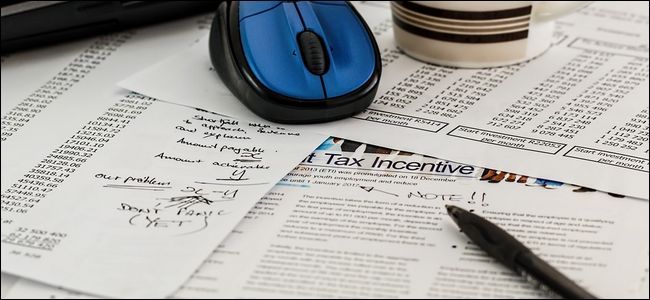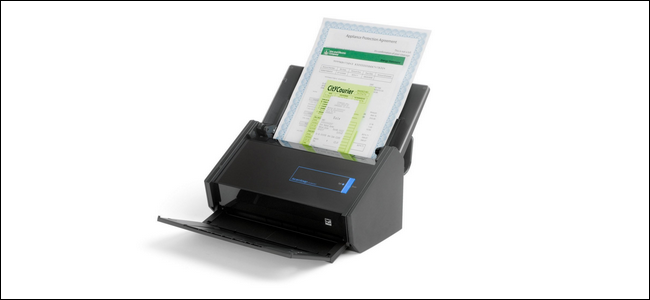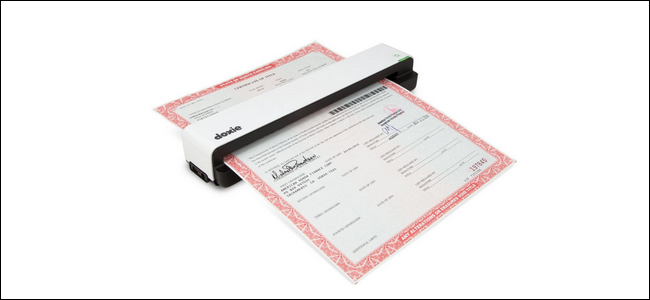Not all scanners are created equal. Even if you buy a top of the line model, it might not be the right tool for the job, and you'll waste time, get inferior results, and curse the day you bought the wrong model.
Why the Scanner Type Matters
Sure, all scanners perform the same process: they use a combination of mirrors, glass, a light source, a CCD chip (just like the one in your digital camera), and some combination of belts, motors, and rollers to move the document and/or the pieces of the scanner around in order to capture your paperwork or photos in their entirety.
But while they all capture images from paper, the way in which they do so, the quality in which they do so, and the amount of effort you have to invest into loading and scanning each individual document or photo varies enormously between models.
Depending on the material you need to scan, and the frequency with which you scan it, the difference between buying the right scanner and the wrong scanner is the difference between "I love this thing! I push a button and I'm done!" and "I'll admit, at the back of my office closet is an old scanner and a box of stuff I need to scan..."
With that in mind, let's look at the four types of scanners you'll find at your local electronics store and how each of those scanner types meets (or fails to meet) a certain set of needs.
Identifying The Right Scanner for Your Needs
We've divided the consumer scanner market into four basic categories: flatbed scanners, sheet-fed scanners, portable scanners, and combination scanners. We'll open each section by highlighting the best-use situation for each type and buying considerations.
Flatbed Scanners: Friend of Photographers and Casual Users Alike
When most people think about scanners, they envision the flatbed scanner, a common home and office peripheral that looks like somebody chopped the top off of a photocopier. The scanner type gets its name from its large and flat fixed glass bed, upon which you lay your documents, close the lid, and scan them.
Hands down, flatbed scanners are the best all-around value for someone who doesn't have any one particular scanning type they do consistently. You can scan photos with a flatbed scanner just as easily as you can scan a document you need to email to your boss.
Flatbed scanners, thanks to their size, have no need to miniaturize components or cut any corners. So they typically have the highest resolution available in the consumer scanner market. You'll see resolution expressed in DPI (dots per inch), with companies advertising very high DPI for flatbed scanners--typically at or in excess of 2,000 DPI. Practically speaking, anything at 600 DPI or higher is perfectly fine for scanning anything short of fine art, or photos you wish to enlarge much bigger. It's not really something you need to stress about, as even cheap $50-70 flatbed scanners have more than enough resolution to scan any of your photos at perfect 1:1 reproduction quality or help you blow smaller photos up to bigger frame sizes.
Advances in scanner technology have made it is so really any flatbed scanner from a well recognized name, like Canon or Epson, is the best all-around choice for a low volume user who wants a tool that is perfect for scanner a shoebox full of old photos and the light office and paperwork scanning.
On the economical side of things, you have models like the Canon LiDE120 ($70) that sport basic features like push-button scanning, software that integrates with apps like Evernote and Dropbox (to automate file archiving and uploading, respectively). It doesn't offer the highest resolution in the category, but it offers enough resolution that 99% of home users would never even notice what was missing.
On the other end of the price scale, you'll find more expensive home flatbed scanners like the highly rated Epson V600 ($199). The V600 not only has three times the resolution of it's more economical brethren, but includes additional features of particular interest to photographers and people archiving old family photos: it can scan slides and film thanks to a back light built into the lid. If you're the archivist in your family, a powerful scans-everything model like the V600 is a solid bet.
Sheet-fed Scanners: The Office Assistant You Crave
While the flatbed scanner might be the best all-around option for somebody who does a little bit of everything, it's an absolutely agonizing tool to use if the bulk of your scanning work is large piles of documents.
If you're looking to have a paperless office where all your documents are scanned into your computer, and you want to churn through a backlog of to-be-scanned paperwork from years past, you need a sheet-fed scanner--no question about it. Scanning even a single bundle of tax documents from years past with a flatbed scanner is agony...scanning boxes of documents from years past with a flatbed scanner is an inner circle of hell.
Sheet fed scanners make scanning piles of paperwork a snap by feeding your documents into the scanner much like the sheet feeder on top of a copy machine can suck up your entire TPS report and spit it back out.
When shopping for a sheet-fed scanner, you're not as interested in high resolution, but in reliability, speed, and ease of use. You want a scanner that scans quickly, won't wear out on you, and is easy to load up with your office paperwork big and small.
To that end, the gold standard of the desktop sheet-fed scanner marker is the ScanSnap line by Fujitsu. Fujitsu was making the desktop sheet-fed scanner everybody coveted ten years ago and they're still making it today. Their current top model--in both reviews and features--is the ScanSnap iX500 ($414). It's the Cadillac of its market and a combination of speed, double sided scanning, durable construction, and ease of use are the reason you'll find it with 3,600+ reviews and an average of 4.5 stars on Amazon.
If that's a little bit rich for your blood, but you still need a dependable sheet-fed scanner, you could always pick up the smaller model in the SnanSnap line, the S1300i ($248). (We've been using a slightly older version of this with great success for years, despite our longing for the bigger ScanSnap model.) Or, if you're willing to try a sheet-fed scanner that isn't part the the fabled SnapScane lineup, there's always the similarly-featured Epson WorkForce DS-510 ($279). Keep in mind that, as you move towards the lower price points, you're trading time for money--what you save on the purchase price you'll burn up over they years by spending more time loading the smaller feeder.
Portable Scanners: a Niche (But Useful) Tool
Though most of us do scanning at our desks, some of you may have scanning needs that are as mobile as the laptop computers you haul with you for work. When it comes to the portable (also sometimes called "handheld") scanner market, the scanner doesn't excel at a lot of things, but they do get the job done.
You're not going to find a battery powered portable scanner with the highest resolution, a giant sheet-feeder, or any of the amenities you'd expect on a desktop model. But you will find scanners that offer resolution that's "good enough", with simple push-button operation.
Although portable scanners have been around for ages in some form or another, it wasn't until the Doxie came out in 2012 that people really paid attention to the category--we even reviewed the Doxie back then. The Doxie is still going strong and retails for $148-224--the higher priced models include improved battery life and Wi-Fi connectivity. Fujitsu has a similar model from their ScanSnap line, the iX100 ($200).
The biggest defining feature in the portable scanner niche market is not resolution (they're all significantly underpowered in that regard), but in wired versus battery powered. The two aformentioned models from Doxie and Fujitsu come at premium because they operate on battery power and can scan either to nearby devices via Wi-Fi (in the case of both models) or to internal/removable storage (in the case of the Doxie).
If you don't need that kind of wireless freedom, however, because anytime you're in the field and need to scan something you're already sitting there with your laptop out, you can slash your purchase price. The Epson WorkForce DS-30 is a the same form factor as the two previous models but, because you tether it directly to your laptop via USB, you can pick it up for only $80.
Combination Scanners: Not Even for Your Enemies
Our final category exists not so we can recommend a model, but so we can recommend against the entire sub-category altogether. In every office supply and electronics store across the country you'll find combination scanners billed as all-in-one wonders for your home office. Typically these combination units look like a miniature copy machine and include a sheet-feeder on top, a flat bed scanner if you lift the lid, a built-in printer, and even a fax machine.
If you've used one or are currently using one and it works for you, great. Use it until it dies of old age and count your blessings. If you're shopping for new hardware for your office, we'd strongly encourage you to avoid purchasing one of these all-in-one style units. They typically run anywhere from $60-200 dollars and that alone should tip you off to the headaches they have in store for you. If a bargain basement scanner costs $50-60 and a bargain basement laser printer also costs $50-60, what are the chances you're going to get a very good combination scanner/printer for $60? Not high.
Further, many of these units have extremely annoying quirks like the scanning function won't work if the printer it out of ink/toner, or it's difficult to scan things to send to another printer because the unit was designed with a copy mode intended to scan and print only to its own printer. Overall, it's almost never worth the headache and you're better off purchasing a stand alone scanner.
Scanner shopping is, without a doubt, one of those instances where investing time on the front end doing your research is the key to home office happiness on the back end. By picking the right scanner for the job you most frequently need it for, you're setting yourself up for a friction free user experience.




